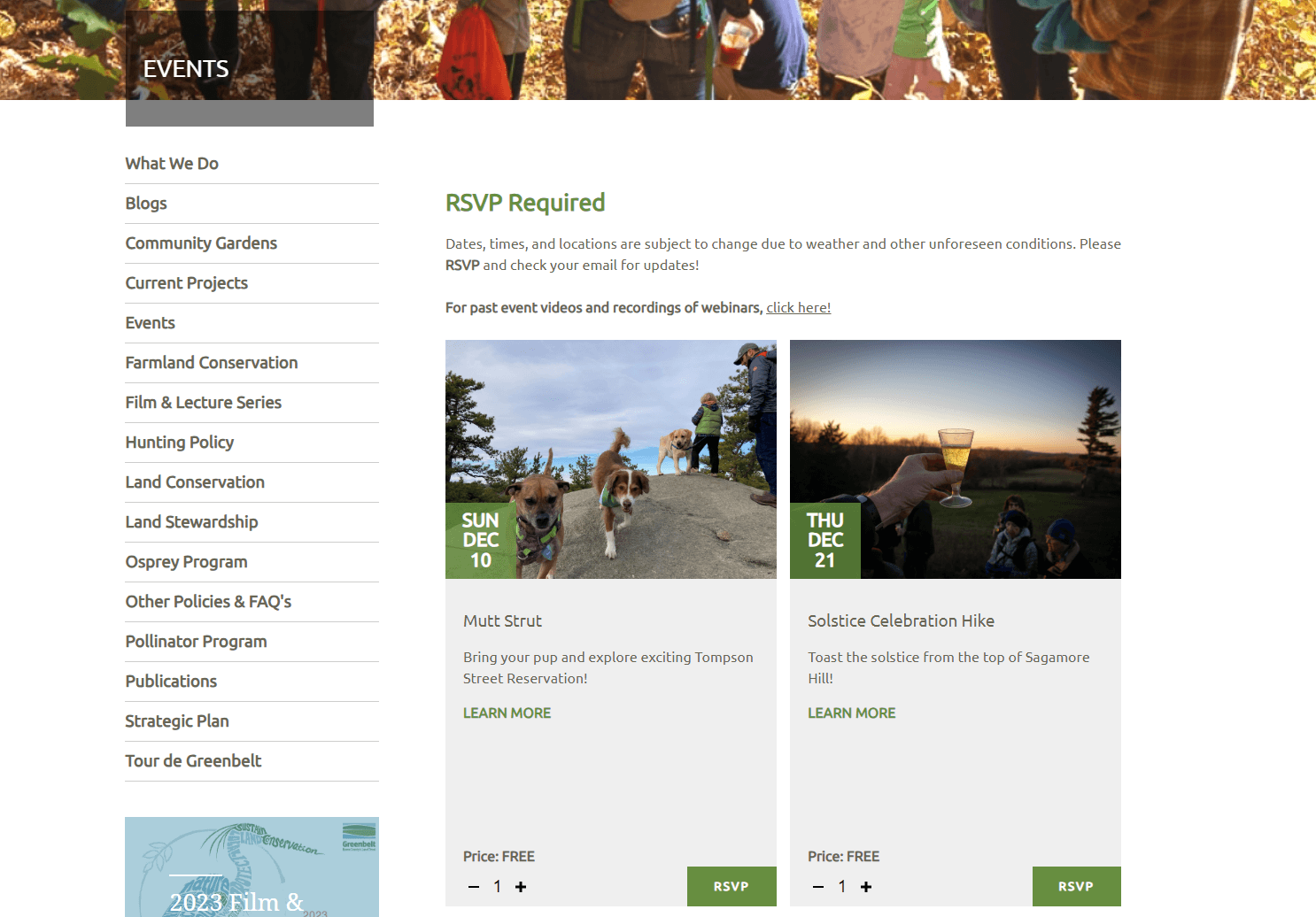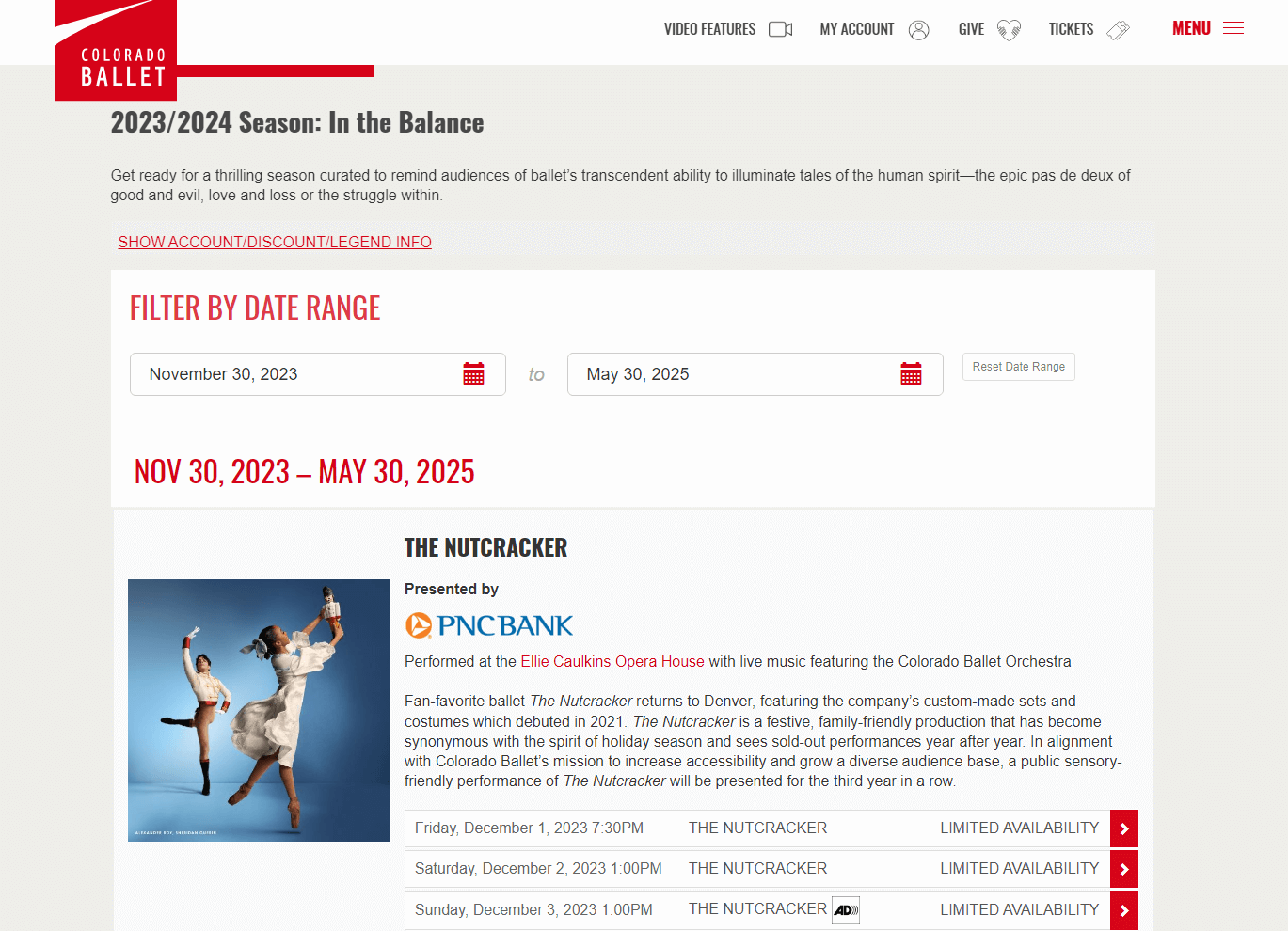Promoting Your Nonprofit Event on Your Website: 4 Ideas
A lot of work goes into planning your nonprofit’s events. Your event committee or team spends time and resources creating the schedule, recruiting volunteers and corporate sponsors, and finding ways to maximize attendee engagement and enjoyment. For this hard work to pay off, you must adopt a strategic approach to promoting your event.
To reach a wide audience, you probably promote your events using multiple online channels. Your website, in particular, is an effective platform to spread awareness of your events because it allows you to display event details and enables supporters to register on the spot.
Whether you’re promoting your Giving Tuesday event, annual fundraising 5K, or regionally-famous chili cook-off fundraiser, you can use your website to effectively spread the word about your event. Use these four tips to get started:
1. Create a dedicated events page.
For assistance with building your own events page, it’s helpful to look at the web pages of other nonprofit websites and get a feel for how you might want to display your events.
For example, take a look at the events page for Greenbelt, a land conservation organization in Essex County, Massachusetts:

The page lists details for all upcoming events, including the date, time, location, registration fee, and a quick link to RSVP. This gives supporters a clear view of different ways they can get involved, allowing them to browse for opportunities they’re most interested in.
Or, for a different approach, get inspired by the performances page on the Colorado Ballet website:

This page offers a detailed description of each upcoming performance and the dates and times available. It even allows users to filter the performances by date range and lets them know when shows have limited availability left. You might design your event page similar to this if you offer a variety of recurring events.
2. Offer easy-to-use registration tools.
Your nonprofit website builder should include event ticketing and registration features so that you can embed this functionality directly into your website. This allows supporters to sign up for events right from your web pages without having to visit a third-party website, providing them with a streamlined registration process.
In addition to online registration tools, consider including these event registration features on your website:
- An online merchandise store. This allows you to sell branded event merchandise to earn extra event revenue and give attendees an additional way to show their support.
- An online donation page. Supporters might feel motivated to contribute an extra donation to your nonprofit while they’re signing up for your event. Or, those who can’t attend your event might want to contribute a donation to show their support in their absence. Either way, be sure to offer a convenient online donation form. Streamline the form by only asking for necessary information, such as donors’ names and payment information.
- A matching gift tool. If supporters decide to give to your organization, you’ll also want to provide them with an easy way to determine if their gifts are eligible for an employer match. Embed a matching gift tool in your online donation form so supporters can research their company and quickly apply for a matching gift.
- Online event waivers. If your event will require physical activity or risk, such as a 5K, polar plunge, or sports competition, you’ll want to include online waivers on your event web page. Attendees can sign your waiver online so that they’re ready to immediately start participating on event day.
These event registration tools make it easy for supporters to learn more about your event, register, and ensure they have everything they need before event day.
Plus, these tools allow you to gather data about supporters, such as their contact information, matching gift eligibility, and other details. This empowers you to learn more about supporters and follow up with them after your event concludes to share more involvement opportunities and build stronger relationships.
3. Create blog content to promote your event.
Building hype for an event by blogging about it beforehand can increase interest and attendance. You can share sneak peeks of your event’s special guests, auction items, or competition prizes. You can also reflect on past events and share your fundraising goal if your event is fundraising-focused.
Getting Attention’s guide to nonprofit blogging offers several tips for optimizing your blogging strategy, including:
- Post consistently. Create several blog posts leading up to your event to increase engagement. Include links to your event registration page throughout the posts to drive traffic to your sign-up form. Also, create a content calendar to help keep your posts organized and ensure you’re posting regularly.
- Use compelling visuals. Incorporate original images (not stock photos) that showcase attendees at your past events or volunteers setting up your event. Create short videos of interviews with staff or volunteers discussing the impact of your event and what attendees should expect.
- Optimize your posts for SEO. To help your event blog posts rank higher on Google search results, incorporate search engine optimization (SEO) best practices into your blogging strategy. These include choosing relevant keywords for your blog posts, incorporating those keywords strategically throughout each post, and including a variety of internal and external links.
- Showcase impact. If you’re highlighting a recurring event, describe the importance of the event for your organization’s programs and projects. For instance, explain that your annual 5K supports your nonprofit’s tutoring program for local students, or that your auction will help raise funding for your capital campaign. This will help attendees visualize the impact of their involvement and encourage them to donate more.
Make sure your website’s blog is robust and includes a variety of posts, not just those highlighting your events. This will help you maintain engagement with your supporters between events and retain their attention.
4. Integrate your website with other marketing channels to supercharge your strategy.
Now that you’ve optimized your website to promote your events in all the most effective ways, it’s time to branch out and encourage more people to visit your website. The best way to do this is to pursue a multichannel marketing strategy that combines several digital marketing channels, including:
- Email: As you send out personal invitations to supporters and bulk emails to promote the event, make sure to include relevant links to pages on your website to drive traffic.
- Newsletters: If you don’t already, consider adding an upcoming events page or section in your monthly newsletter. If it’s an email newsletter, include a link to your event landing page or registration page. If it’s a physical newsletter, add a QR code instead.
- Social media: Create social media posts that include your event page link, and encourage followers and subscribers to share the post with their personal networks to spread the word.
- Search ads: By tapping into search engine marketing, your nonprofit can advertise your event to new audiences who may be searching relevant keywords. Search ads lead users right to the most important pages on your website, like your event landing page.
Once you determine which channels to use, you can lead users to your website from these channels in a variety of ways. Depending on your audience’s preferences and your event marketing goals, this might look like:
- Leveraging the Google Ad Grant to promote your event on Google search. The Google Ad Grant is a corporate giving program from Google that gives back to eligible nonprofits by providing them with $10,000 in monthly ad credits for free. With this grant, you can create ads for your event landing page that appear at the top of Google search results when people search terms like “nonprofit auction near me.”
- Using social media to ask supporters to send in photos and videos from past events. You can include this user-generated content in your blog posts to highlight your upcoming event, repost them on your own social media pages, and allow supporters to see themselves reflected in your content.
- Hosting a countdown to your hybrid or virtual event. To ramp up excitement for an online event, start a virtual countdown and post updates on your event web page and social media pages.
Along with these strategies to drive traffic to your website, you can use your website’s event content to highlight other channels, too.
For example, when you integrate your social media profiles with your website, you can display a social media live feed on your homepage and encourage visitors to connect with you on both marketing channels. You can also use social media widgets to allow supporters to share your event on their personal pages or share their donations with their followers and encourage them to give, too.
Using your nonprofit website to promote your events is both effective and budget-friendly. Your website likely already has a variety of features, such as your blog and event calendar, that you can leverage to increase event awareness and attendance. You can use your website to supplement marketing efforts on other channels and provide a centralized location for supporters to get all the event information they need.






